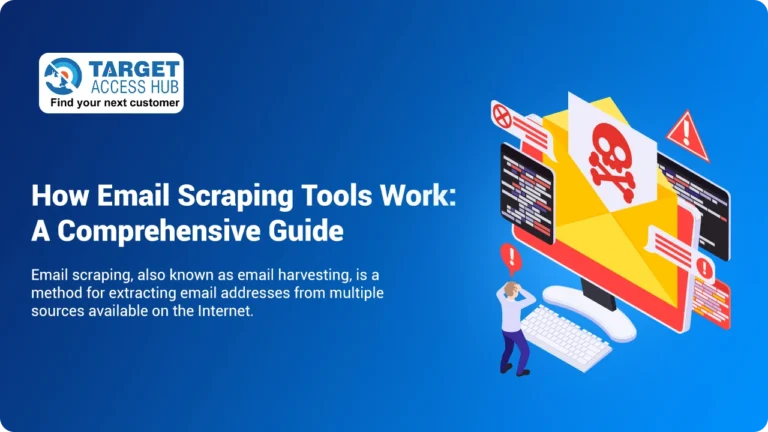Maximizing Property Management Databases for Better ROI
Having access to property manager contact databases is just the beginning. The real challenge lies in transforming those contacts into meaningful business relationships that drive consistent revenue. Many companies invest heavily in premium databases only to see disappointing conversion rates and lackluster ROI. The difference between success and failure often comes down to strategy, not just data quality.
Property management professionals are bombarded with sales pitches daily, making it increasingly difficult to cut through the noise. However, companies that implement smart, data-driven approaches are seeing remarkable results – some achieving conversion rates 300% higher than industry averages.
The key is knowing that modern property managers want partners who understand their challenges and can demonstrate value from the first interaction.
Strategy 1: Segment Beyond Basic Demographics
Most companies make the critical mistake of treating all property managers the same. This one-size-fits-all approach is why so many outreach campaigns fall flat. Game changing companies segment their databases based on actionable intelligence that drives personalized messaging.
Start by categorizing property managers by portfolio size, property types, and management focus. A manager overseeing 500+ residential units faces entirely different challenges than someone managing a handful of commercial properties. Large-scale residential managers typically struggle with tenant turnover, maintenance coordination, and cost optimization. Commercial property managers focus more on lease negotiations, tenant retention, and building value enhancement.
Geographic segmentation adds another powerful layer. Property managers in high-growth markets like Austin or Phoenix deal with rapid expansion challenges. At the same time, those in established markets like New York focus on optimization and efficiency. Understanding these nuances allows you to craft messages that immediately resonate with specific pain points.
Advanced segmentation goes deeper into behavioral patterns. Identify early adopters who embrace new technology versus traditional managers who prefer proven solutions. This intelligence helps you adjust your messaging tone, case studies, and implementation timelines to match their decision-making style.
Strategy 2: Perfect Your Multi-Touch Sequence Timing
The fortune is in the follow-up, but timing is everything in property management outreach. Most property managers make decisions during specific windows throughout the year, and understanding these cycles dramatically improves your conversion rates.
Budget planning season runs from September through November, making this the prime time for pitching annual services and major technology investments. Property managers are actively seeking solutions that can be implemented in the new fiscal year. During this period, focus on ROI projections, cost savings, and efficiency improvements.
Lease renewal periods create another high-opportunity window. Multi-family property managers often handle renewals in spring and fall, creating natural touch points for services that improve tenant satisfaction and retention rates. Commercial property managers typically work on longer cycles, but major lease renewals often trigger infrastructure and service evaluations.
The key is mapping your outreach sequence to these natural business rhythms rather than pushing your own sales calendar. A well-timed sequence might include an initial value-focused email during budget season, followed by case studies during implementation periods, and success stories during renewal seasons.
Strategy 3: Lead with Data-Driven Value Propositions
Property managers are analytical by nature – they live and breathe spreadsheets, occupancy rates, and cost per unit metrics. Generic value propositions about “saving time and money” don’t resonate with professionals who need specific, quantifiable outcomes.
Develop value propositions that speak their language with concrete metrics. Instead of saying “reduce maintenance costs,” present “decrease maintenance spend by 23% through predictive scheduling algorithms.” Rather than promising “improved tenant satisfaction,” offer “increase lease renewals by 15% through proactive communication systems.”
The most effective approach involves benchmarking their current performance against industry standards and showing specific improvement potential. Property managers managing Class A apartments want to know how your solution helps maintain 95%+ occupancy rates. Those handling workforce housing need proof you can reduce turnover costs below industry averages.
Create industry-specific calculators that demonstrate potential ROI based on their portfolio characteristics. A maintenance optimization calculator for residential managers or a tenant retention tool for commercial properties provides immediate value while showcasing your expertise. These tools position you as a consultative partner rather than just another vendor.
Strategy 4: Leverage Social Proof and Peer Networks
Property management is a relationship-driven industry where peer recommendations carry enormous weight. Smart companies build social proof systematically and leverage industry networks to amplify their database outreach efforts. Industry associations and conferences provide goldmines of social proof opportunities.
Professional networking platforms like LinkedIn offer powerful amplification opportunities. Encourage satisfied clients to share success stories, comment on your content, and participate in industry discussions. These organic endorsements reach extended networks and warm up prospects before your outreach begins.
Consider creating a client advisory board or user community where satisfied property managers can connect with prospects during the evaluation process. Nothing sells better than honest peer-to-peer conversations about real results and implementation experiences.
Strategy 5: Implement Advanced Tracking and Optimization
The most successful companies treat database utilization as a continuous optimization process rather than a one-time campaign. They track granular metrics, identify patterns, and constantly refine their approach based on real performance data.
Track engagement metrics beyond basic open and click rates. Monitor which content pieces drive phone calls, which case studies generate meeting requests, and which value propositions lead to qualified opportunities. This intelligence helps you double down on what works and eliminate what doesn’t.
Implement proper attribution tracking to understand the full customer journey. Property managers often research solutions for months before making contact. Understanding which touchpoints influence decisions helps you optimize the entire sequence rather than just individual messages.
A/B test everything systematically – subject lines, sending times, content formats, and call-to-action placement. Small improvements compound over time. A 2% improvement in open rates combined with a 3% increase in click-through rates can double your overall campaign effectiveness
Summing Up
Property manager databases represent significant investments, but companies implementing these five strategies consistently see 250-400% improvements in conversion rates and overall ROI. The key is treating database utilization as a strategic discipline rather than a tactical activity, focusing on delivering genuine value rather than just generating activity.




![Ultimate Guide : Property Management Email Templates [2024]](https://targetaccesshub.com/wp-content/uploads/2024/02/maximizing-property-management-success-through-email-templates-768x432.webp)
